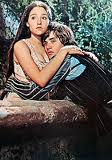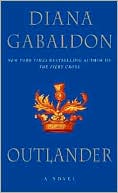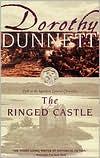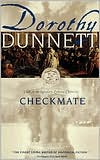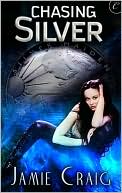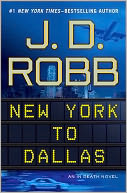 It’s very difficult to figure out what books I’m looking forward to most in 2012. I mean when I started to look at lists, I realized that most of what I was anticipating were the next books in series, or new books from authors I already knew. But when I looked at the list of my best reads from this past year, most of them turned out to be authors who were new to me. It’s a puzzle, isn’t it?
It’s very difficult to figure out what books I’m looking forward to most in 2012. I mean when I started to look at lists, I realized that most of what I was anticipating were the next books in series, or new books from authors I already knew. But when I looked at the list of my best reads from this past year, most of them turned out to be authors who were new to me. It’s a puzzle, isn’t it?
This doesn’t mean I didn’t enjoy the series books that I read. I certainly did. But it’s the discoveries that turned out to be the most memorable. Maybe that’s because they were such surprises.
Just the same, these are the books I am planning to stalk NetGalley for review copies. And if I can’t get a review copy? Well, then I’ll just have to buy a copy and review it anyway. There’s even a reading challenge about reading one book a month just for fun!
But the books I’m looking for in 2012 are…drumroll, please!
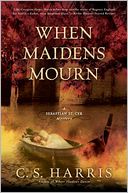 When Maidens Mourn by C.S. Harris will be the next book in her Sebastian St. Cyr historical mystery series. What Angels Fear is the first book, and St. Cyr is a detective of the amateur and aristocratic variety. He should be the hero of a Regency romance, and in other circumstances, he might have been. But his service in Wellington’s army has left him much too tormented for that. His personal life makes him a tragic hero; the demons that drive him make him an ideal detective, if only to keep him from becoming a criminal. March can’t come soon enough on this.
When Maidens Mourn by C.S. Harris will be the next book in her Sebastian St. Cyr historical mystery series. What Angels Fear is the first book, and St. Cyr is a detective of the amateur and aristocratic variety. He should be the hero of a Regency romance, and in other circumstances, he might have been. But his service in Wellington’s army has left him much too tormented for that. His personal life makes him a tragic hero; the demons that drive him make him an ideal detective, if only to keep him from becoming a criminal. March can’t come soon enough on this.
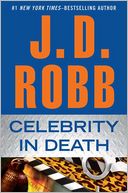 Celebrity in Death by J.D. Robb. This is Eve Dallas’ 34th outing. I’ve read all of them. Usually in one sitting. I still can’t figure out how she does it, but Robb/Roberts does it really, really well. This book means there will be one warm night in February.
Celebrity in Death by J.D. Robb. This is Eve Dallas’ 34th outing. I’ve read all of them. Usually in one sitting. I still can’t figure out how she does it, but Robb/Roberts does it really, really well. This book means there will be one warm night in February.
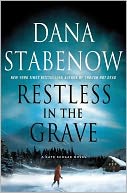 Restless in the Grave by Dana Stabenow. I think I will always have a fondness for Alaska stories. Heck, I still tell Alaska stories, and it’s been 6 years now since I left Anchorage. But living in Alaska is something that changed my perspective, probably forever. The situations Dana writes about in her novels are always a tiny bit familiar, even the ones set in the Bush. Because Alaska is possibly the world’s biggest small town, and there weren’t six degrees of separation, there were three at most. Even for cheechakos like us. Dana writes damn good mysteries, but I always read them for a taste of the place we almost called home.
Restless in the Grave by Dana Stabenow. I think I will always have a fondness for Alaska stories. Heck, I still tell Alaska stories, and it’s been 6 years now since I left Anchorage. But living in Alaska is something that changed my perspective, probably forever. The situations Dana writes about in her novels are always a tiny bit familiar, even the ones set in the Bush. Because Alaska is possibly the world’s biggest small town, and there weren’t six degrees of separation, there were three at most. Even for cheechakos like us. Dana writes damn good mysteries, but I always read them for a taste of the place we almost called home.
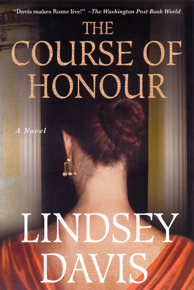
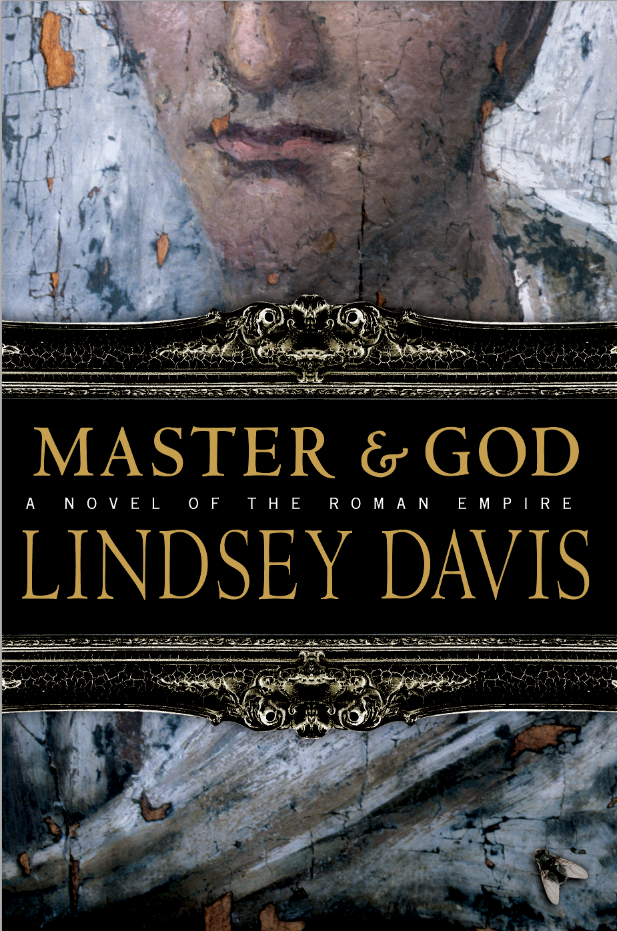 Master and God by Lindsey Davis. I love Davis’ Marcus Didius Falco series. The whole idea of a hard-boiled detective operating in Imperial Rome has always been utterly delicious. And Falco’s wife Helena Justina is made of awesome. Master and God is not a Falco book. It’s historical fiction set in the same time period. Davis wrote one other work of historical fiction set during the Falco period, The Course of Honor. I read it years ago and it was fantastic. If Master and God is half as good, it will be well worth reading. Come to think of it, I hope people re-discover The Course of Honor. It was incredibly good and I don’t think it got half the attention it deserved.
Master and God by Lindsey Davis. I love Davis’ Marcus Didius Falco series. The whole idea of a hard-boiled detective operating in Imperial Rome has always been utterly delicious. And Falco’s wife Helena Justina is made of awesome. Master and God is not a Falco book. It’s historical fiction set in the same time period. Davis wrote one other work of historical fiction set during the Falco period, The Course of Honor. I read it years ago and it was fantastic. If Master and God is half as good, it will be well worth reading. Come to think of it, I hope people re-discover The Course of Honor. It was incredibly good and I don’t think it got half the attention it deserved.
 The Bride Wore Black Leather by Simon R. Green. This one has been teasing me every time I look at Amazon. The recommender can figure out I want to read this, so it sorta/kinda looks like it’s available, but it’s not. January 3, 2012. Come on already. For those fans of the Nightside, John Taylor is finally going to marry his long-suffering (in more ways than one) girlfriend, Suzie Shooter. He just has one last job to finish up before he meets her at the altar. But no job in the Nightside is ever easy, especially not for John Taylor.
The Bride Wore Black Leather by Simon R. Green. This one has been teasing me every time I look at Amazon. The recommender can figure out I want to read this, so it sorta/kinda looks like it’s available, but it’s not. January 3, 2012. Come on already. For those fans of the Nightside, John Taylor is finally going to marry his long-suffering (in more ways than one) girlfriend, Suzie Shooter. He just has one last job to finish up before he meets her at the altar. But no job in the Nightside is ever easy, especially not for John Taylor.
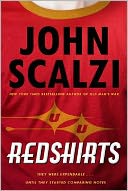 Redshirts by John Scalzi. This sounds like it’s going to be really cool. And really, really funny. And yes, the redshirts in the title are those redshirts. Like in Star Trek. The ones that always get killed at the beginning of the mission. What happens if a bunch of them figure it out? And decide that they are not going to let it happen to them? This sounds like something only Scalzi could possibly do justice to. In June, we’ll all find out.
Redshirts by John Scalzi. This sounds like it’s going to be really cool. And really, really funny. And yes, the redshirts in the title are those redshirts. Like in Star Trek. The ones that always get killed at the beginning of the mission. What happens if a bunch of them figure it out? And decide that they are not going to let it happen to them? This sounds like something only Scalzi could possibly do justice to. In June, we’ll all find out.
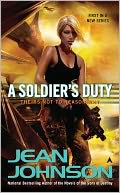 An Officer’s Duty by Jean Johnson is the next installment in her series, Theirs Not to Reason Why. I loved the first book, A Soldier’s Duty (reviewed here), and I can’t wait to see where Johnson next leads her time-travelling heroine, Io, in her quest to save the human race from utter extinction. July 31 is way too far away for this one.
An Officer’s Duty by Jean Johnson is the next installment in her series, Theirs Not to Reason Why. I loved the first book, A Soldier’s Duty (reviewed here), and I can’t wait to see where Johnson next leads her time-travelling heroine, Io, in her quest to save the human race from utter extinction. July 31 is way too far away for this one.
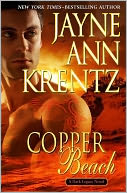 Copper Beach by Jayne Ann Krentz. I knew that someday the Krentz was going to link the Victorian era Arcane Society of her Amanda Quick novels to her contemporary Jones & Jones psychic investigations to her futuristic romances under her Jayne Castle pseudonym. I read them all, but the links make for an added twist that I love. In January Copper Beach starts a new subseries, Dark Legacy.
Copper Beach by Jayne Ann Krentz. I knew that someday the Krentz was going to link the Victorian era Arcane Society of her Amanda Quick novels to her contemporary Jones & Jones psychic investigations to her futuristic romances under her Jayne Castle pseudonym. I read them all, but the links make for an added twist that I love. In January Copper Beach starts a new subseries, Dark Legacy.
 Crystal Gardens is the start of a second subseries, Ladies of Lantern Street, that Krentz is starting in April under her Amanda Quick name. That means it’s a Victorian era story, at least for the first book. All of the Arcane Society books, both contemporary and Victorian, have been excellent romantic suspense.
Crystal Gardens is the start of a second subseries, Ladies of Lantern Street, that Krentz is starting in April under her Amanda Quick name. That means it’s a Victorian era story, at least for the first book. All of the Arcane Society books, both contemporary and Victorian, have been excellent romantic suspense.
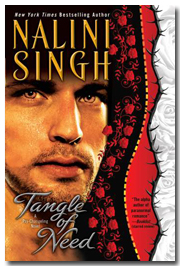
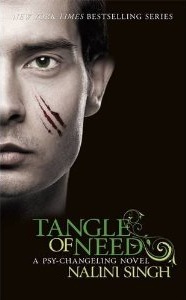 Tangle of Need by Nalini Singh is the 11th book in her Psy-Changelings series, and the first to be published in hardcover. Although her Archangel series hasn’t wowed me, the psy-changeling books have never failed to please. I only wish that the release date was earlier than May. And I wish the US version had a better cover. The UK cover is awesome. (UK on left, US on right.)
Tangle of Need by Nalini Singh is the 11th book in her Psy-Changelings series, and the first to be published in hardcover. Although her Archangel series hasn’t wowed me, the psy-changeling books have never failed to please. I only wish that the release date was earlier than May. And I wish the US version had a better cover. The UK cover is awesome. (UK on left, US on right.)
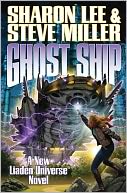
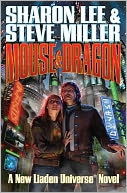 Dragon Ship by Sharon Lee and Steve Miller. I want to go back to Liaden. I want to catch up on the books in between (there are several) that I haven’t read, and I want to finally find out how things are going. Liaden is one of the greatest, if not the greatest, space opera science fiction romance universes of all time. Dragon Ship is due Labor Day. I think I have enough time to get caught up. It will be so worth it.
Dragon Ship by Sharon Lee and Steve Miller. I want to go back to Liaden. I want to catch up on the books in between (there are several) that I haven’t read, and I want to finally find out how things are going. Liaden is one of the greatest, if not the greatest, space opera science fiction romance universes of all time. Dragon Ship is due Labor Day. I think I have enough time to get caught up. It will be so worth it.
This last book is an absolute flyer. It sounds really cool, but who knows.
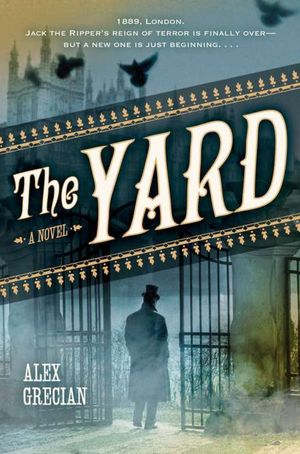 The Yard by Alex Grecian. What if, after Scotland Yard failed to capture Jack the Ripper, they started a Murder Squad? 12 detectives specifically charged with investigating the thousands of murders in foggy, grimy, crime-filled London. How much luck would they have? When one of their own is murdered, the Yard’s first forensic pathologist is put on the track of the killer. I love historic mysteries, and this sounds very, very cool. In May, I’ll find out.
The Yard by Alex Grecian. What if, after Scotland Yard failed to capture Jack the Ripper, they started a Murder Squad? 12 detectives specifically charged with investigating the thousands of murders in foggy, grimy, crime-filled London. How much luck would they have? When one of their own is murdered, the Yard’s first forensic pathologist is put on the track of the killer. I love historic mysteries, and this sounds very, very cool. In May, I’ll find out.
These are the books I’m looking forward to this year. I wonder how many will end up on my “best books of 2012” list.
What are your most anticipated books for 2012?
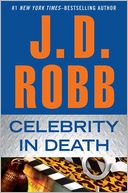 If Eve Dallas were of a more philosophical bent, she would have meditated on the “life imitates art imitates life” nature of her latest case in Celebrity in Death. But the character that J.D. Robb created over 30 books ago is all hard-nosed murder cop, and that’s why we love her adventures. That’s also why her multi-billionaire ex-criminal husband Roarke loves her too.
If Eve Dallas were of a more philosophical bent, she would have meditated on the “life imitates art imitates life” nature of her latest case in Celebrity in Death. But the character that J.D. Robb created over 30 books ago is all hard-nosed murder cop, and that’s why we love her adventures. That’s also why her multi-billionaire ex-criminal husband Roarke loves her too. For Eve, it’s only been a couple of years since she cracked the Icove case. Dr. Wilfred Icove tried to beat death by cloning human beings, and died for his sins, and his secrets (Origin in Death). The case was so high-profile, and so scandalous, that Eve’s friend and go-to reporter, Natalie Furst, was able to make a best-seller out of her book on the inside story. That book, The Icove Agenda, is being filmed in New York, and the producers want to get all the real-life principals to interact with their actor-counterparts.
For Eve, it’s only been a couple of years since she cracked the Icove case. Dr. Wilfred Icove tried to beat death by cloning human beings, and died for his sins, and his secrets (Origin in Death). The case was so high-profile, and so scandalous, that Eve’s friend and go-to reporter, Natalie Furst, was able to make a best-seller out of her book on the inside story. That book, The Icove Agenda, is being filmed in New York, and the producers want to get all the real-life principals to interact with their actor-counterparts.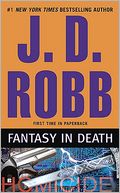 Escape Rating B+: While I enjoyed this one, it wasn’t as riveting as New York to Dallas (see review), or my personal favorite, Fantasy in Death.
Escape Rating B+: While I enjoyed this one, it wasn’t as riveting as New York to Dallas (see review), or my personal favorite, Fantasy in Death.

